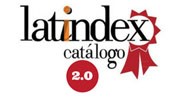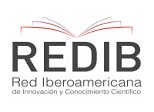Pay From my Cell Phone with Electronic Money
DOI:
https://doi.org/10.69890/hallazgos21.v3i0.247Keywords:
financial inclusion; unbanked; electronic money; vulnerable sectors; liquidity.Abstract
The electronic money or "cash from my cell phone" is part of the monetary politics promoted by the Government of the Citizens' Revolution of President Rafael Correa, with effect from 9 September 2014, once it entered into force on the International Monetary and Financial Code. The new monetary system in effect seeks to include an alternative means of payment that mitigate the lack of liquidity in the economy and stimulate consumption; For its effectiveness, it is necessary that the population and with special emphasis, those who are excluded from the formal banking system, denominated unbanked and that are generally in the rural areas of the mother country and that, generally, carry out their mercantile transactions in Cash, they can access to open an account in the Central Bank where they recharge their cell phone with the equivalent amount in dollars physical with air; Which leads to boosting the economy of the vulnerable sectors and thereby avoiding reliance on speculators, squatters or informal lenders. The research tries to determine in the most objective way possible the effectiveness, viability and appropriateness of this means of payment, to reactivate the commercial sector and concomitantly to the national economy, where the main tool is a cell phone with minimum characteristics accessible to People with low income levels. The research rigorously addresses the qualitative approach, 30 interviews are conducted to opinion leaders and entrepreneurs of the tertiary sector of the economy, both structured and semi-structured, techniques of observation and focus group, were efficiently employed in the main cities of Ecuador as Quito, Guayaquil, Cuenca, Portoviejo and with particular emphasis on the commercial area of Santo Domingo, as one of the cities with the highest commercial growth rate.
References
Asamblea Nacional. (2009). Ley Reformatoria a al LEy de Régimen Monetario y Banco del Estado. Quito.
Banco Central del Ecuador. (2014). Estatuto Orgánica de Gestión Organizacional por Procesos del Banco Central del Ecuador. Quito.
Banco Central del Ecuador. (24 de Mayo de 2016). Servicio de Rentas Internas. Obtenido de Dinero Electrónico: http://www.sri.gob.ec/web/guest/dinero-electronico
Diario, “Andes”. (03de octubre de 2013). La bancarización en el Ecuador llega apenas al 52%. Obtenido. http://www.andes.info.ec/es/noticias/bancarizacion-ecuador-llega-apenas-52-ciento-poblacion.html
Diario, “El Ciudadano”. (12 de enero de 2017). Dinero electrónico generó más de 15 millones en transacciones. Obtenido. http://www.elciudadano.gob.ec/dinero-electronico-genero-mas-de-15-millones-de-dolares-en-transacciones/
Diario, “El Telégrafo”. (12 de enero de 2017). Sistema de dinero electrónico dejará de ser administrado por el Banco Central. Obtenido. https://www.eltelegrafo.com.ec/noticias/economia/4/el-sistema-de-dinero-electronico-dejara-de-ser-administrado-por-el-banco-central
Diario, “El Universo”. (13 de septiembre de 2016). Compras-tarjetas de crédito. Obtenido. https://www.eluniverso.com/noticias/2016/09/13/nota/5798622/compras-tarjeta-credito-pagos-diferido-o-corriente
Diario, “El Universo”. (09 de noviembre de 2013). Bancarización Ecuador llega al 52%. Obtenido. https://www.eluniverso.com/noticias/2013/11/09/nota/1698901/bancarizacion-ecuador-llega-52-segun-solines
Felber, C. (2014). Dinero. De fin a medio. Barcelona.
Gary Gas. (24 de Mayo de 2016). Monedero Electrónico. Obtenido de http://www.garygas.com/manuales/UsoServicioMonederoElectronico.pdf
González, J. (2014). Manual de fórmulas financieras. Una herramienta para el mundo actual. México: Alfaomega.
Grijalva, E.A. (2014). Dinero Electrónico como Herramienta de Inclusión Financiera en el Ecuador.Tesis. Obtenido de http://repositorio.usfq.edu.ec/handle/23000/3662
Ley Orgánica de la Economía Popular y Solidaria y del Sector Financiero Popular y Solidario: Legislación Conexa. (2015). 2012: Corporación de Estudios y Publicaciones.
Moncayo, J. ; Reis, M. (2016). Microfinanzas. Obtenido: https://www.microfinancegateway.org/sites/default/files/publication_files/analisis_inicial_del_dinero_electronico_en_el_ecuador_y_su_impacto_en_la_inclusion_financiera_presentacion_cuestiones_economicas.pdf
López, P. (2016). Expansión. Obtenido de Modenero electrónico: http://www.expansion.com/diccionario-economico/monedero-electronico.html
Pilay, T. F. S. (2017). Economía social y solidaria en el contexto ecuatoriano. recus. Revista Electrónica Cooperación Universidad Sociedad. ISSN 2528- 8075, 1(1), 9-20.
Senplades. (2013). Plan Nacional para el Buen Vivir 2013-2017. Quito: Senplades.
Downloads
Published
How to Cite
Issue
Section
License
Los artículos enviados a la Revista Científica Hallazgos21 deberán ser totalmente originales e inéditos.
Los autores son los responsables de los textos y las imágenes incluidas en los artículos y no necesariamente reflejan el pensamiento de la editorial o de la Pontificia Universidad Católica del Ecuador, Sede Esmeraldas (PUCESE).
Los autores disponen cederle a la Revista Científica Hallazgos21 todos los derechos inherentes para la edición, publicación y distribución o divulgación del mismo.
Se autoriza a las revistas firmantes de los acuerdos de Encuentros de Revistas Latinoamericanas para reproducir en parte o totalmente los artículos con la sola mención de la fuente claramente señalada.







